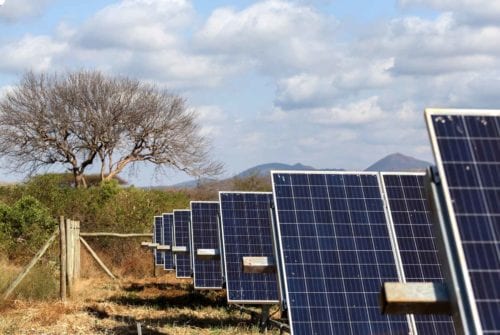
How Four Simple and Collaborative Business Models Can Unlock Nigeria’s $1 Billion Undergrid Minigrid Market
Hundreds of millions of people around the world are underserved by utilities providing inconsistent power, and this challenge has no easy fix. Minigrid systems can serve many of these undergrid customers more economically and more reliably, as articulated by Energy Market and Regulatory Consultants (EMRC) and RMI’s 2018 report Under the Grid: Improving the Economics and Reliability of Rural Electricity Service with Undergrid Minigrids. In Nigeria alone, thousands of rural communities could be better served by undergrid minigrids. Implementing the 4,000 undergrid minigrid projects that RMI estimates to be financially viable in Nigeria today could save Nigerian distribution utilities $30 million to $60 million annually. Doing so could also offer minigrid owners $1 billion in annual revenue and save communities $170 million in yearly energy expenditures. The opportunity could also scale to peri-urban communities—where higher loads strengthen the business case for minigrids—and underserved communities throughout sub-Saharan Africa and the world.
Since Under the Grid was released, the focus on the undergrid minigrid opportunity in Nigeria has grown substantially. In discussions with many stakeholders, we hear an eagerness to support undergrid community development and access the business opportunity presented by undergrid minigrid projects. However, early efforts to implement projects indicate a complex project development process. Undergrid minigrids require planning and collaboration between stakeholders who can initially be at odds. These challenges have contributed to the collapse of some negotiations and prevented communities from accessing minigrid services. The latest report by RMI, Clean Tech Hub, and EMRC (with support from All On) Electrifying the Underserved: Models for Developing Minigrids Under the Grid offers four business models as practical solutions to guide stakeholders in implementing undergrid minigrids in Nigeria today.
Through our engagement with utilities, minigrid companies, and communities, we have identified two key barriers to implementing undergrid minigrids: 1) a lack of familiarity with how to actually develop an undergrid minigrid and 2) a concern about competing interests complicating project development and operation. In our most recent report, we outline 15 critical decision points that define a business model; these decision points can help stakeholders to navigate the roles of undergrid minigrid project participants, which otherwise are complicated and open to interpretation. Many stakeholders are interested in investing in undergrid minigrids, so new ownership models—such as special purpose vehicles (SPVs) or community cooperatives—may be required to give distribution company (DisCo) investors, communities, and others more influence over project development and operation.
The four business models can be implemented under Nigeria’s current social, political, and economic environment. Each model requires the collaboration of three or more participants. We describe the role of each participant in implementing the minigrid, as well as the process for doing so and project benefits and risks. The four business models are listed below:
- Minigrid operator-led, in which a private minigrid operator leads development of the minigrid, with consultation across the DisCo and community. This model is easiest to implement in the short term.
- SPV-led, in which development is led by an SPV (potentially formed by a DisCo’s investors) and certain specialized functions are subcontracted to a minigrid operator. The SPV-led model is more complicated but unlocks investment from additional parties.
- Cooperative-led, in which a cooperative formed by the community leads minigrid development. The community cooperative-led model maximizes community ownership and buy-in to the project.
- Collaborative SPV-led, in which ownership and operation functions are shared among the minigrid operator, community cooperative, and DisCo investors. This model creates a unique SPV that shares ownership across project participants to maximize buy-in while sharing risk and leveraging individual strengths.
Exhibit 1. Comparison of expected outcomes from four undergrid minigrid business models
As Exhibit 1 indicates, each business model offers a unique set of strengths and weaknesses. This analysis does not recommend one business model over another; project participants will need to agree on what outcomes they prioritize to determine the most appropriate model. The minigrid operator-led model is fastest to implement. The SPV-led model offers greater potential for DisCo investor loss reduction. The cooperative-led model could yield the most affordable tariffs. The collaborative model offers loss reduction and tariff affordability while encouraging greater alignment of project partners.
The most important aspect of each business model is the requirement for multiple project participants to work together toward a common outcome and share the significant benefits equitably. For instance, DisCos must continue to own existing distribution while another party invariably owns the generation assets. Projects also need to reflect real community needs, and project participants need to work within Nigerian regulation to support customer well-being and economic development. Good-faith negotiation and the sharing of costs and revenues (while ensuring beneficial outcomes for the community) are essential for project success. Such negotiation requires a different mind-set from that used in many private projects—which involve only one stakeholder—but can demonstrate a more integrated model for electrification that can scale to influence energy planning throughout Nigeria and beyond.
